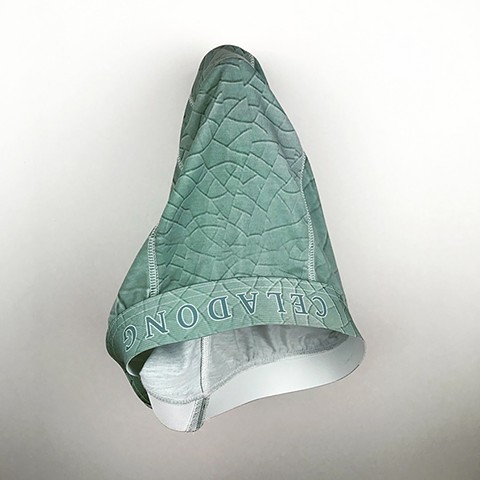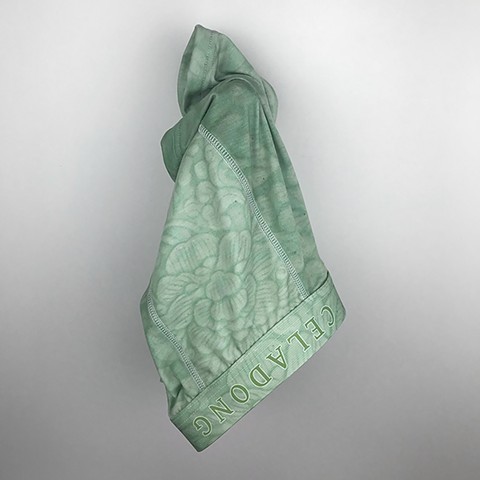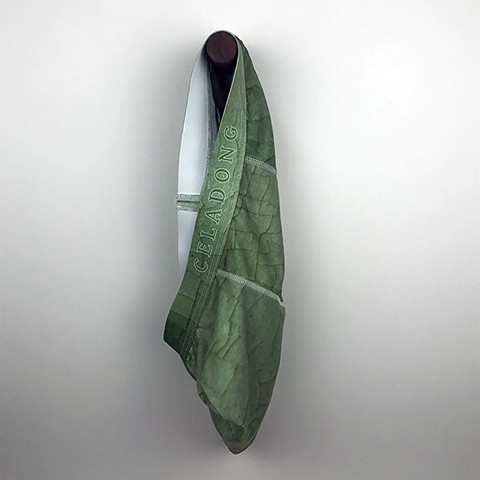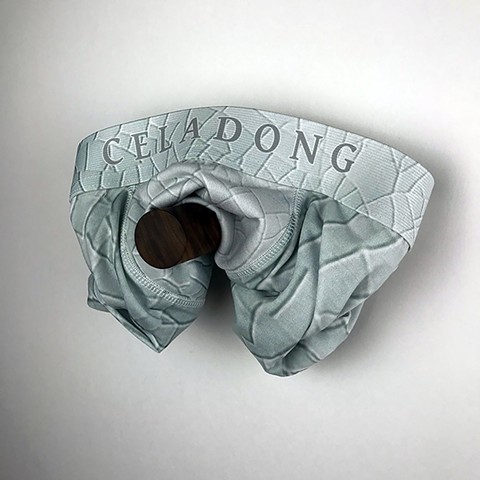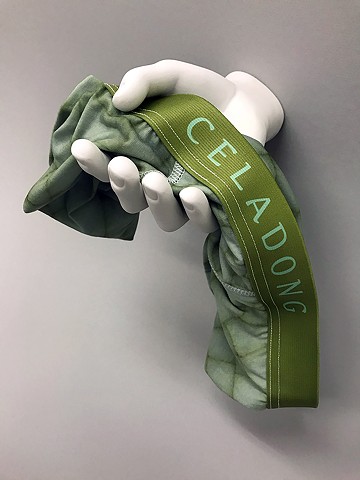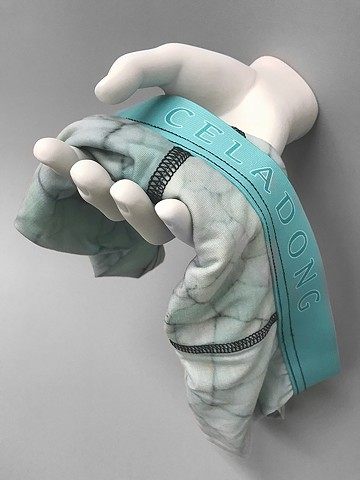CELADONG
Artist's Statement: The term cockamamie has its origins within the ceramic vernacular denoting a particular type of commercial ceramic decal that has been marketed by decal manufacturers since the mid-1900s. Such decals are characterized wacky, weird, or unusual for the type & style of imagery that they specifically portray. Comic strip characters, for example, are common motifs depicted in cockamamie ceramic decals. The word cockamamie was first used for the genre because it was thought that young children might have difficulty pronouncing the French word “décalcomanie”. Known more commonly in its shortened form “decal”, this word is the proper name for the decorative technique by which printed imagery is transferred upon ceramic ware. As a deliberate mispronunciation of décalcomanie, a cockamamie winds up being a strategically marketed malapropism designed to cater to a younger audience of makers & further the appeal of the ceramic decal craze known as “decalcomania”. For those who suffer from such an irresistible & insatiable craving to work with decals, the late Howard Kottler, one who helped redefine the field of contemporary American ceramics through his unconventional use of commercial decals, would diagnose those afflicted makers as full-fledged “decalcomaniacs”. I suffer from such an affliction. My interest in the nuance of ceramic decals, cockamamie and other, resides in the semantics of ceramics as I strive to question what constitutes an image that is particular to the field of ceramics.
Description: This work parodies a particular school of ceramic hyper-masculinity that fetishizes atmospheric firing processes. CELADONG applies digital images of traditional celadon glazed surfaces with a fictional brand of men’s underwear, which I designed and had prototyped by a clothing manufacturer, constituting a brief departure from the authenticity depicted in my Shinowear series. (Celadon is a type of transparent glaze that is jade-green to sky blue in color. It is produced by firing a small amount of iron oxide in a glaze base at a high fire temperature in a reduction kiln. Celadon often contains a small network of cracks in the surface of the glaze, known as crazing.)
